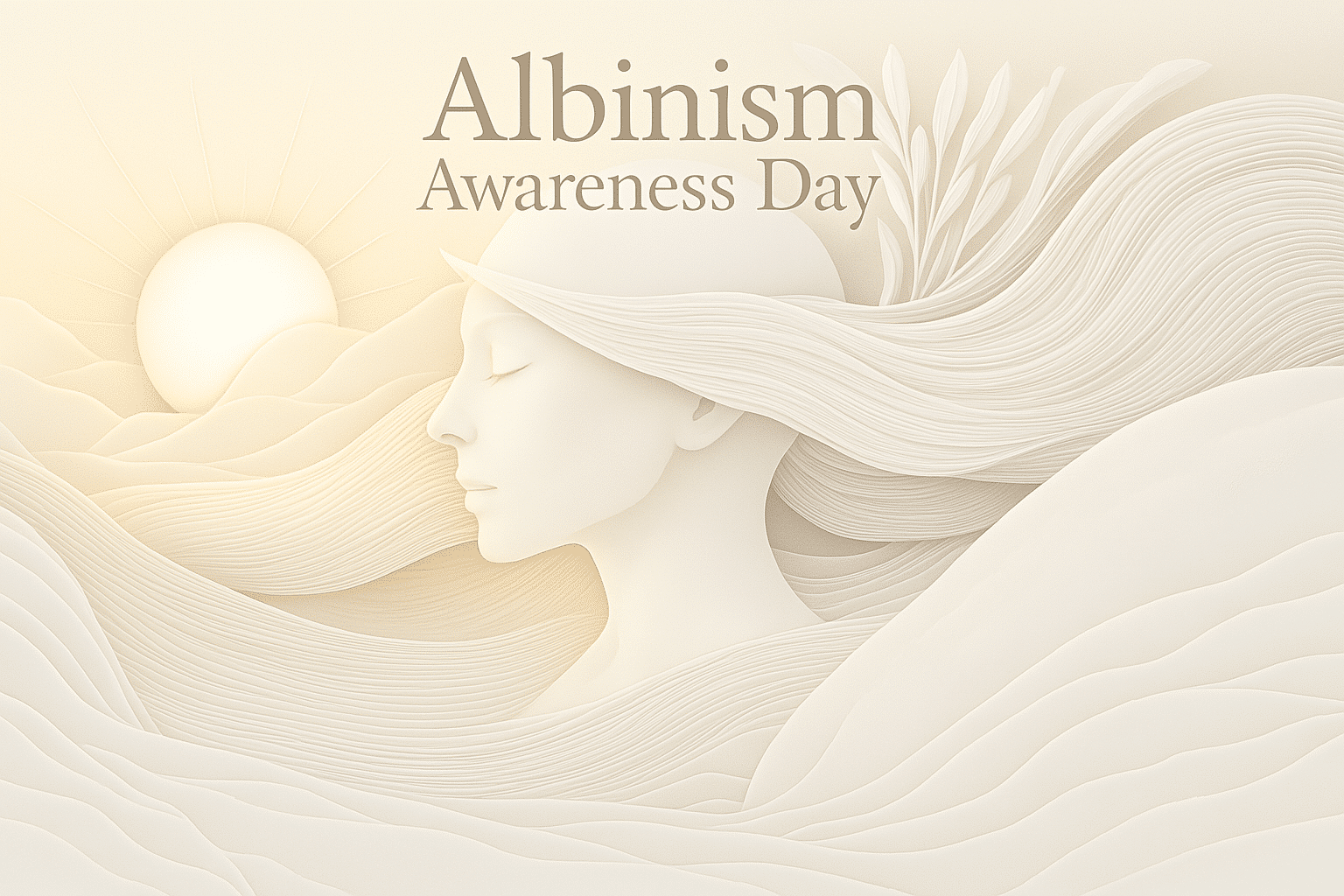What is International Albinism Awareness Day?
International Albinism Awareness Day is held each year on June 13 and is recognized globally. It is a day to raise awareness about albinism, a rare genetic condition that reduces or eliminates the body’s production of melanin. This results in pale skin, light hair, and visual impairments. People with albinism are more vulnerable to sun exposure and often need extra protection from ultraviolet radiation.
The day highlights both the medical aspects of albinism and the social discrimination that many people with the condition face. It is also a day of pride. People with albinism are celebrated for their identity, their strength, and their contributions to society. Awareness campaigns encourage education, inclusion, and stronger legal protections.
This observance was created to push back against myths, violence, and exclusion. It offers an opportunity for people around the world to learn more about albinism and to listen to the voices of those who live with it.
History and Origin
The United Nations officially declared June 13 as International Albinism Awareness Day in 2014. This decision followed years of advocacy by human rights groups, activists, and individuals affected by albinism. It was created in response to widespread violence, discrimination, and harmful beliefs, especially in some African countries where people with albinism have been targeted and attacked.
The choice of date reflects an earlier milestone: on June 13, 2013, the UN Human Rights Council adopted its first-ever resolution on albinism. This was the first formal recognition of the urgent need to protect the rights and lives of people with this condition.
Since the first observance in 2015, International Albinism Awareness Day has grown in scope. It is now marked in dozens of countries with events that include public lectures, school programs, art exhibitions, and marches. The day gives a global stage to the people most affected, and it brings together advocates who are working for real change.
Who participates in International Albinism Awareness Day?
- People with Albinism: Use the day to share their stories, raise their voices, and celebrate their identities.
- Families and Caregivers: Join in awareness events and support the dignity and visibility of their loved ones.
- Human Rights Organizations: Advocate for stronger protections and equal rights in education, employment, and healthcare.
- Medical and Vision Experts: Share guidance on the unique health needs of people with albinism.
- Schools and Teachers: Create opportunities for students to learn about genetic diversity and inclusion.
Slogans and Themes
Each year, International Albinism Awareness Day is guided by a theme that reflects current priorities in the global movement. Themes have included “Inclusion is Strength,” “Still Standing Strong,” and “Shining Our Light to the World.” These messages center around empowerment, community, and visibility. The slogans are not only calls to action but also affirmations of identity and pride.
Colors, Symbols and Patterns
Colors:
- White: Represents the physical traits associated with albinism and the brightness of visibility and truth.
- Gold: Symbolizes the value, dignity, and strength of people with albinism.
- Sky Blue: Often used to represent hope and clarity in awareness campaigns.
Symbols:
- Sun: Highlights the relationship between albinism and the need for sun protection.
- Butterfly: Represents growth, beauty, and transformation.
- Ribbon: Used to show solidarity and support, often in white or gold.
Patterns:
- Contrast Motifs: Use light and shadow to reflect the visual experience of people with albinism.
- Inclusive Imagery: Shows people with albinism confidently living, working, and learning.
- Circular Designs: Suggest unity, global solidarity, and the movement toward equal rights.
Most Used Hashtags
- #AlbinismAwareness
- #IAAD
- #CelebrateAlbinism
- #InclusionIsStrength
- #EndDiscrimination
How do you celebrate International Albinism Awareness Day?
- Raise Awareness Online: Share facts, stories, and images that help others understand albinism better.
- Host or Attend Events: Take part in talks, panels, or marches organized by advocacy groups or communities.
- Support Local Organizations: Donate to groups that offer healthcare, education, and legal help for people with albinism.
- Teach and Learn: Introduce albinism as a topic in classrooms, libraries, or community centers.
- Wear White or Gold: Use symbolic colors to show support and spark conversations.
Why is International Albinism Awareness Day important?
This day matters because it brings attention to the human rights of people with albinism. In many places, they face exclusion, bullying, or worse. Discrimination can block access to school, jobs, and healthcare. Misinformation fuels fear, and myths put lives in danger.
But this day is also about resilience. People with albinism continue to work, create, learn, and lead, despite the barriers. International Albinism Awareness Day is a moment to honor that strength, to share accurate knowledge, and to demand equality. It reminds us that everyone deserves to live without fear, with dignity and opportunity.
Features
Contact Info
June 13: Albinism Awareness Day
Why do you keep falling for the same type?
Read the article Lovemaps: the hidden blueprint of our love.

